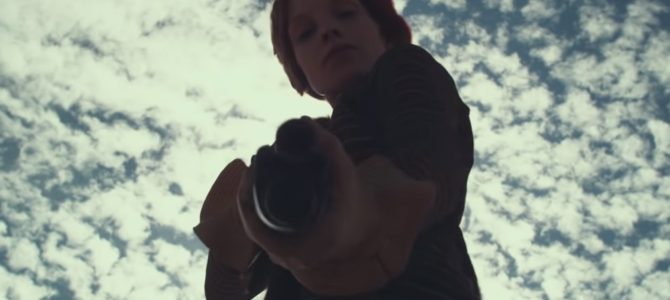
When the Warren Beatty-Faye Dunaway film about Bonnie and Clyde premiered in 1967, actor James Garner, no conservative, criticized the film to Beatty. Garner hated how it glamorized and sanitized the outlaws who were, in point of fact, sadistic killers. By turns, the law enforcement officials who pursued them were fascist thugs in service to the banks.
The film was more a reflection of the late 1960s rather than early ’30s America. Bonnie and Clyde were transformed into fun-loving populists who robbed from the banks to give to the foreclosed poor. When they did engage in violence, it was against the “establishment” and the police who served it. The film depicted the pair as representing a way out of victimization.
A key scene that encapsulated all of the above was when the pair captured Texas Ranger Frank Hamer. Beatty’s Clyde worked himself up into frenzy when he blasted Hamer (played by Denver Pyle, whose previous work was as the bizarre mountain man on “The Andy Griffith Show”) as an Okie crusher. If not for Bonnie, Clyde would have gunned Hamer down on the spot. Instead, they tied him up and stuck him adrift in a rowboat.
For those offended by the 1967 film, “The Highwaymen,” a movie appearing this month on Netflix, will be applauded by the more historically minded who are less interested in polemics. In the film, the pair are not class levelers, but sadists hooked on violence. The actress playing Bonnie has none of the glamour of Faye Dunaway, whose clothing in the film inspired a fashion trend. Instead, she shoots downed policemen in the face.
In the form of Kevin Costner, Hamer has been rescued from the propaganda of the Beatty film. Costner, who once egotistically played on his surfer looks, allows his age to show through. He is a weathered and out-of-shape relic (unable to negotiate a wooden fence while pursuing a member of the Barrow gang) from a period when lawmen pursued criminals on horseback and felled them with a Winchester rifle.
Despite showing Hamer warts and all — for instance, frequently using fisticuffs to get information from those who work with the bandits or admire them — Costner is no less a justice figure. It is the sadism of the pair, and not a chance to prove his manhood, that galvanizes Costner into pursuit.
Costner is the “bad cop” to his partner Maney Gault’s “good” one. In a remarkable performance, Woody Harrelson shows how joining Costner is an attempt to prove his manhood. Like many men from the Great Depression, poverty has unmanned him. What Costner gets with his fists, Harrelson obtains with good ol’ boy charm. Of the two, Harrelson hates the killing and is in essence the “conscience” of the pair.
Historians of Bonnie and Clyde have said the pair was able to avoid the law with modern technology. That is, a souped-up car and the latest in weaponry: machine guns to the local cops’ single-action rifle. Hamer and Gault know this, and exchange their Winchesters for machine guns.
But they have to contend with Bonnie and Clyde’s popularity among those brutalized by the Great Depression. With their bank robbing, Bonnie and Clyde gave the downtrodden a vicarious thrill, taking the fight to the upper class. Regarded as Depression-era Robin Hoods, there is no proof they ever gave “from the rich to give to the poor.” Costner is clear-eyed about their history and regards them as “animals.”
Without condoning the vigilantism of Costner and Harrelson, the film clearly is on their side. Thankfully, unlike the Beatty vehicle, “The Highwaymen” doesn’t traffic in polemics. But it does depict the two aged lawmen as much better cops than the FBI.
They also have to battle the female governor of Texas, Ma Ferguson (an excellent Kathy Bates), who despises their vigilante tactics. At first giving them license to use any and all means to get Bonnie and Clyde, she eventually cannot stomach their vigilante tactics and demands they be brought in.
As with the performances, “Highwaymen” doesn’t depict Costner and Harrelson’s pursuit in glamorous ways. They live out of a car, eating restaurant food with little sleep. Nevertheless, the film holds the audience’s interest. Viewers in the know are aware that Bonnie and Clyde will eventually be riddled with machine-gun bullets, and it is this inevitable fate that gives the earlier scenes punch.
Controversy has always surrounded Hamer’s decision to fatally ambush Bonnie and Clyde on a Louisiana road. Some have said Hamer called out to the pair to give up. Others have asserted Hamer did not before the pair was riddled with at least 150 rounds of bullets. The movie weighs in on Costner asking them to give up.
“The Highwaymen” shows Costner and Harrelson in top form, honoring their characters while acknowledging their flaws.









